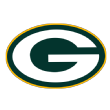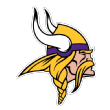It’s been more than two months since the Green Bay Packers and Minnesota Vikings played to a 29-29 tie at Lambeau Field in Week 2.
Most thought the rematch Sunday at U.S. Bank Stadium would go a long way toward determining the NFC North champion.
Instead, it might only end up eliminating one of the two teams.
“I definitely didn’t expect to be sitting where we’re sitting,” Rodgers said this week on a conference call with reporters in Minnesota. “But our record is what it is. Obviously Minnesota has a strong team, they’re probably surprised where they’re sitting as well. I don’t think either of us are out of the division race. We’re definitely still alive with six to go, and this is obviously an important game as far as tiebreaks and stuff, but there is a lot of season left.”
Here’s a look from Packers reporter Rob Demovsky and Vikings reporter Courtney Cronin at what’s happened to the two teams since then, how their high-priced quarterbacks have played and what this matchup could mean:
What’s the biggest change for each team since Week 2?
 Demovsky: Aaron Jones is the Green Bay’s second-best offensive weapon, and if coach Mike McCarthy used him more, he’d be the best. Jones was finishing his two-game suspension when the teams met at Lambeau and the Packers still had Ty Montgomery (who has since been traded to Baltimore). Now, Jones leads all regularly used running backs with a 6.36 yards per carry average. His speed through the hole is best illustrated by his yards per rush before contact — an NFL best 4.57, which is more than a half yard better than the No. 2-ranked Matt Breida (3.92) of the 49ers. While Davante Adams continues to be the focus of the Packers’ pass-happy offense, Jones has yet to carry more than 15 times in a game.
Demovsky: Aaron Jones is the Green Bay’s second-best offensive weapon, and if coach Mike McCarthy used him more, he’d be the best. Jones was finishing his two-game suspension when the teams met at Lambeau and the Packers still had Ty Montgomery (who has since been traded to Baltimore). Now, Jones leads all regularly used running backs with a 6.36 yards per carry average. His speed through the hole is best illustrated by his yards per rush before contact — an NFL best 4.57, which is more than a half yard better than the No. 2-ranked Matt Breida (3.92) of the 49ers. While Davante Adams continues to be the focus of the Packers’ pass-happy offense, Jones has yet to carry more than 15 times in a game.
 Cronin: Daniel Carlson, the rookie kicker Minnesota spent a fifth-round pick on, was cut one day after he missed three field goals at Lambeau Field and replaced by veteran Dan Bailey. Despite pressuring Aaron Rodgers on 32 percent of his dropbacks in Week 2, the Vikings’ defense struggled throughout the early portion of the season, but 10 weeks later look like the unit that dominated the NFL last year, ranking No. 1 on third downs, No. 5 in total defense, No. 6 against the run and No. 6 against the pass. The run game has been all over the map this season, being ineffective at times where the Vikings have been forced to rely on Adam Thielen and Stefon Diggs in the passing game. Dalvin Cook was just getting started when he injured his hamstring in overtime in Week 2, which limited him to one half of football over Minnesota’s following six games. Now that Cook is back and healthy, the Vikings are looking to find ways to utilize his explosive skill set elsewhere if the run game continues to struggle.
Cronin: Daniel Carlson, the rookie kicker Minnesota spent a fifth-round pick on, was cut one day after he missed three field goals at Lambeau Field and replaced by veteran Dan Bailey. Despite pressuring Aaron Rodgers on 32 percent of his dropbacks in Week 2, the Vikings’ defense struggled throughout the early portion of the season, but 10 weeks later look like the unit that dominated the NFL last year, ranking No. 1 on third downs, No. 5 in total defense, No. 6 against the run and No. 6 against the pass. The run game has been all over the map this season, being ineffective at times where the Vikings have been forced to rely on Adam Thielen and Stefon Diggs in the passing game. Dalvin Cook was just getting started when he injured his hamstring in overtime in Week 2, which limited him to one half of football over Minnesota’s following six games. Now that Cook is back and healthy, the Vikings are looking to find ways to utilize his explosive skill set elsewhere if the run game continues to struggle.
How would you assess the play of each quarterback this season?
 Demovsky: If you were looking strictly at the stat sheet, you’d think Rodgers was having another MVP-type season. Nineteen touchdowns against only one interception jumps off the page. But Rodgers has been almost as inaccurate as he had ever been before, missing some throws he’d made 100 times out of a 100 in years past and failing to go to open receivers on easy check-down opportunities. No quarterback has thrown more touchdowns with one or fewer interceptions through 10 games and had a losing record during the Super Bowl era. That about sums up how difficult it’s been to assess Rodgers’ season. The Week 1 knee injury didn’t help, but Rodgers said that’s no longer a factor.
Demovsky: If you were looking strictly at the stat sheet, you’d think Rodgers was having another MVP-type season. Nineteen touchdowns against only one interception jumps off the page. But Rodgers has been almost as inaccurate as he had ever been before, missing some throws he’d made 100 times out of a 100 in years past and failing to go to open receivers on easy check-down opportunities. No quarterback has thrown more touchdowns with one or fewer interceptions through 10 games and had a losing record during the Super Bowl era. That about sums up how difficult it’s been to assess Rodgers’ season. The Week 1 knee injury didn’t help, but Rodgers said that’s no longer a factor.
 Cronin: The high-priced free agent’s $84 million price tag for Kirk Cousins led some to believe that he would be the immediate answer in taking Minnesota to the next level. But Cousins’ play has been up and down. There’s the really good — orchestrating a comeback to send the Vikings to OT in Green Bay; putting up 31 points in a shootout loss with the Rams; grabbing a critical road win at Philadelphia in Week 5 — and the really bad. Cousins has committed 13 turnovers this season, which is tied for the second-most in the NFL. While he’s completed an NFL-best 65 percent of his passes when under duress, he’s thrown four interceptions and lost four fumbles on sacks when pressured, according to ESPN Stats & Information. This is what some projected when Cousins was brought in as the Vikings’ next franchise quarterback. Backed by the strength of Minnesota’s defense, the thought was that Cousins didn’t have to be perfect for the Vikings to win, but there haven’t been too many times this season when his play was the determining factor in a victory. When the Vikings last played the Packers, Cousins was 21-for-25 for 259 yards and three touchdowns when targeting Thielen and Diggs, his most completions, yards and touchdowns to that duo this season. Thielen and Diggs have played a major role in Cousins’ success without having the support of a run game to take pressure off the QB.
Cronin: The high-priced free agent’s $84 million price tag for Kirk Cousins led some to believe that he would be the immediate answer in taking Minnesota to the next level. But Cousins’ play has been up and down. There’s the really good — orchestrating a comeback to send the Vikings to OT in Green Bay; putting up 31 points in a shootout loss with the Rams; grabbing a critical road win at Philadelphia in Week 5 — and the really bad. Cousins has committed 13 turnovers this season, which is tied for the second-most in the NFL. While he’s completed an NFL-best 65 percent of his passes when under duress, he’s thrown four interceptions and lost four fumbles on sacks when pressured, according to ESPN Stats & Information. This is what some projected when Cousins was brought in as the Vikings’ next franchise quarterback. Backed by the strength of Minnesota’s defense, the thought was that Cousins didn’t have to be perfect for the Vikings to win, but there haven’t been too many times this season when his play was the determining factor in a victory. When the Vikings last played the Packers, Cousins was 21-for-25 for 259 yards and three touchdowns when targeting Thielen and Diggs, his most completions, yards and touchdowns to that duo this season. Thielen and Diggs have played a major role in Cousins’ success without having the support of a run game to take pressure off the QB.
What’s the playoff outlook for each team with a loss on Sunday?
 Demovsky: It’s not a must-win, but it’s close. Their mathematical chances would take a big hit with a loss. According to ESPN’s FPI, their playoff chances would go from 36 percent to 16 percent with a loss and would spike to 61 percent with a win. However, the Packers should be favored in most of their final five games. The only game that they’re likely to be underdogs is Week 15 at Chicago. Before that, they have home games against the Falcons and Cardinals and then close at the Jets and home against the Lions. If they’re not mentally deflated, they could realistically go on a five-game winning streak to close the regular season and get to 9-6-1 even with a loss at Minnesota.
Demovsky: It’s not a must-win, but it’s close. Their mathematical chances would take a big hit with a loss. According to ESPN’s FPI, their playoff chances would go from 36 percent to 16 percent with a loss and would spike to 61 percent with a win. However, the Packers should be favored in most of their final five games. The only game that they’re likely to be underdogs is Week 15 at Chicago. Before that, they have home games against the Falcons and Cardinals and then close at the Jets and home against the Lions. If they’re not mentally deflated, they could realistically go on a five-game winning streak to close the regular season and get to 9-6-1 even with a loss at Minnesota.
 Cronin: The Vikings go on the road to New England and Seattle the next two weeks, so a win on Sunday night is critical for bolstering their playoff hopes given they’ll likely not be favored against the Patriots, and anything can happen against the Seahawks. As it stands, the Vikings would be the NFC’s second wild-card team and have a 51 percent chance of making the playoffs, according to ESPN’s FPI. That number jumps up to 70 percent if they beat Green Bay and plummets to a 27 percent chance of making the postseason with a loss. This is the second game for Minnesota in their most difficult four-game stretch of the season with only one matchup being played at U.S. Bank Stadium. If the Vikings can make it out of their Chicago-Green Bay-New England-Seattle slate with at least a 1-3 record and then finish out the season with wins over Miami, Detroit and Chicago, a 9-6-1 finish should hold them in the spot they’re in right now. But a win on Sunday is critical in achieving that feat given there aren’t many gimmes among their remaining games.
Cronin: The Vikings go on the road to New England and Seattle the next two weeks, so a win on Sunday night is critical for bolstering their playoff hopes given they’ll likely not be favored against the Patriots, and anything can happen against the Seahawks. As it stands, the Vikings would be the NFC’s second wild-card team and have a 51 percent chance of making the playoffs, according to ESPN’s FPI. That number jumps up to 70 percent if they beat Green Bay and plummets to a 27 percent chance of making the postseason with a loss. This is the second game for Minnesota in their most difficult four-game stretch of the season with only one matchup being played at U.S. Bank Stadium. If the Vikings can make it out of their Chicago-Green Bay-New England-Seattle slate with at least a 1-3 record and then finish out the season with wins over Miami, Detroit and Chicago, a 9-6-1 finish should hold them in the spot they’re in right now. But a win on Sunday is critical in achieving that feat given there aren’t many gimmes among their remaining games.


